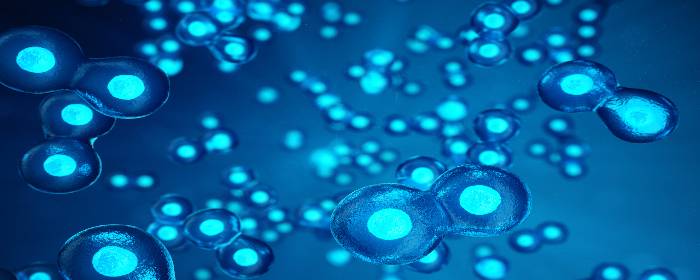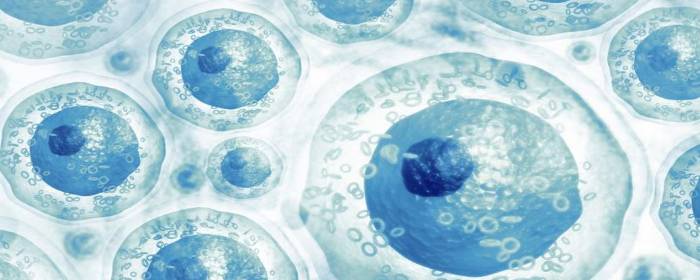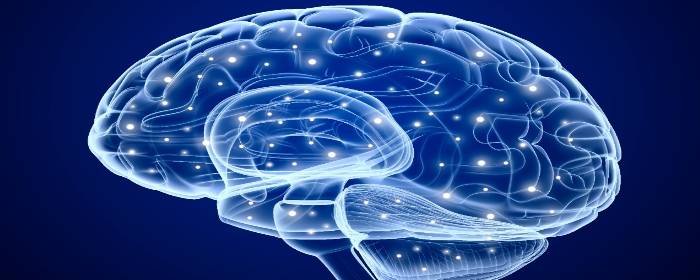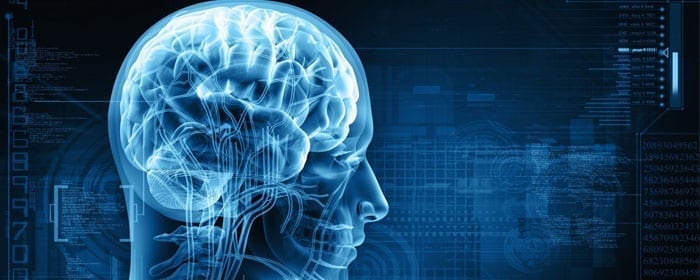
by admin | Mar 29, 2019 | Mesenchymal Stem Cells, Stem Cell Research, Stroke, Umbilical Stem Cell
An ischemic stroke is a devastating event. An ischemic stroke is caused when a blood clot blocks blood flow to a portion of the brain. If the blood cannot deliver oxygen and nutrients, brain cells in the affected area die. Whatever functions that area of the brain once performed are now lost—brain cells do not regenerate the same way as other cells do.
Not surprisingly, researchers are trying to find ways to restore dead brain cells so that patients can regain function. Stem cells are one of the most promising options in this pursuit. Stem cells can reduce brain damage caused by ischemia (lack of blood flow, nutrients, and oxygen). Moreover, stem cells can help animals with stroke regain neurological function.
Scientists have wondered, however, whether mesenchymal stem cells taken from the umbilical cord can achieve the same effects. Umbilical cord tissue is plentiful and the cells taken from the umbilical cord have many incredible properties.
Dr. Zhang and researchers in his group extracted mesenchymal stem cells from umbilical cord tissue collected from humans. This umbilical cord tissue is usually thrown away after a baby is born, but researchers have been collecting this material because it is rich in mesenchymal stem cells. The researchers then created ischemic strokes in rats by blocking one of the arteries to the brain. They then used stem cells to try to block the damaging effect of stroke in these rats.
The stem cells were given to the rats intravenously. The stem cells moved from the bloodstream into the brain and collected in the area of the stroke. Some of the stem cells actually became new brain cells in the damaged area. Moreover, rats treated with stem cells had better physical functioning than animals who did not receive stem cell treatment.
While this study was performed in rats, the implications for humans are profound. This work shows that mesenchymal stem cells taken from the umbilical cord are capable of improving function after stroke. This is exited news since it is much easier to obtain stem cells from umbilical cord tissue that it is from bone marrow (which requires an invasive procedure).
Reference: Zhang, Lei et al. (2017). Neural differentiation of human Wharton’s jelly-derived mesenchymal stem cells improves the recovery of neurological function after transplantation in ischemic stroke rats. Neural Regeneration Research. 2017 Jul; 12(7): 1103–1110.

by admin | Jan 27, 2019 | Exosomes, Heart Failure, Kidney Disease, Stem Cell Research, Stem Cell Therapy, Stroke, Umbilical Stem Cell
Tissue injury is common to many human diseases. Cirrhosis results in damaged, fibrotic liver tissue. Idiopathic pulmonary fibrosis and related lung diseases cause damage to lung tissue. A heart attack damages heart tissue, just as a stroke damages brain tissue. In some cases, such as minor tissue injury, the damaged tissue can repair itself. Over time, however, tissue damage becomes too great and the organ itself can fail. For example, long-standing cirrhosis can cause liver failure.
One area of active research is to find ways to protect tissue from injury or, if an injury occurs, to help the tissue repair itself before the damage becomes permanent and irreversible. Indeed, tissue repair is one of the main focuses of regenerative medicine. Likewise, one of the most promising approaches in the field of regenerative medicine is stem cell therapy. Researchers are learning that when it comes to protecting against tissue injury and promoting tissue repair, exosomes harvested from stem cells are perhaps the most attractive potential therapeutic.
Why are stem cell exosomes so promising? Exosomes are small packets of molecules that stem cells release to help the cells around them grow and flourish. While one could inject stem cells as a treatment for diseases (and they certainly do work for that purpose) it may be more effective in some cases to inject exosomes directly. So instead of relying on the stem cells to produce exosomes once they are injected into the body, stem cells can create substantial amounts of exosomes in the laboratory. Exosomes with desired properties could be concentrated and safely injected in large quantities, resulting in a potentially more potent treatment for the disease.
Indeed, researchers have shown that extracellular vesicles (exosomes and their cousins, microvesicles) can be collected from stem cells and used to treat a variety of tissue injuries in laboratory animals.
Just a few examples of this research:
- Exosomes from umbilical cord-derived mesenchymal stem cells were able to accelerate skin damage repair in rats who had suffered skin burns.
- Exosomes from the same type of stem cell protected the lungs and reduced lung blood pressure in mice with pulmonary hypertension.
- Exosomes from endothelial progenitor cells protected the kidney from damage caused by a lack of blood flow to the organ.
In this growing field of Regenerative Medicine, research is constant and building as new science evolves from stem cell studies. Researchers are closing in on the specific exosomes that may be helpful in treating human diseases caused by tissue injury.
Reference: Zhang et al. (2016). Focus on Extracellular Vesicles: Therapeutic Potential of Stem Cell-Derived Extracellular Vesicles. International Journal of Molecular Sciences. 2016 Feb; 17(2): 174.

by admin | Jan 14, 2019 | Stem Cell Research, Stem Cell Therapy, Stroke
Patients who suffer ischemic stroke have some treatment
options, but many of them require immediate intervention and so are not useful
if too much time has elapsed between the stroke and treatment. Therapies that
employ stem cells are promising alternatives because stem cells can differentiate
into brain cells and potentially help to replace tissue that has been damaged
or destroyed.
A recent study published in Stem Cells
and Development has shown for the first time that a specific type of stem
cell – called ischemia-induced multipotent stem cells – may be able to help
with such repair of brain tissue in patients who have suffered a stroke.
Specifically, the research team demonstrated the technical ability to isolate
the ischemia-induced multipotent stem cells from the brains of elderly stroke
patients.
The scientists then used protein
binding techniques to determine where in the brain these stem cells came from.
They found that the cells came from areas of the brain where brain cells had been
damaged or killed from the stroke. These cells were located near blood vessels
and expressed certain biological markers that enabled the researchers to
confirm that they qualified as stem cells. Specifically, these cells had
proliferative qualities that suggested that they could potentially be used to
re-populate damaged areas of the brain. The cells also showed the ability to
differentiate into different types of cells, a key characteristic of stem cells
used for therapeutic purposes.
This study represents a
significant step in overcoming the technical challenges associated with
isolating and classifying ischemia-induced multipotent stem cells. The next
step for researchers will be to test the potential of these cells in stroke
treatment. If researchers show that these stem cells can be used to
successfully repair damaged areas of the brain – and more importantly, restore
functions that were disrupted by the stroke – then physicians and scientists
may be able to work together to translate these findings into therapies that
are regularly used in stroke.
Reference
Tatebayashi et al. 2017. Identification of multipotent stem
cells in human brain tissue following stroke. Stem Cells and Development, 26(11), 787-797.

by admin | Oct 3, 2018 | Health Awareness, Stroke
Stroke is a serious, life-threatening condition in which the blood supply to the brain is interrupted or diminished, often resulting in permanent brain damage and disability. While nearly 800,000 people experience a new or recurrent stroke each year, these conditions are largely preventable. In fact, up to 80% of all strokes can be prevented.
Part of prevention comes from knowing to understand your risk factors. There are many factors contributing to the condition, including lifestyle, medical, and genetic factors, which are explored below.
Lifestyle Risk Factors
Smoking: Smoking can damage the blood vessels in many ways, causing thickening and narrowing and increasing the buildup of fat. This makes it more difficult for blood to get through, which can eventually lead to conditions like stroke and heart disease.
Being Overweight: Excess body weight produces similar effects: it can increase blood pressure and spike cholesterol levels, so exercising regularly and eating a diet consisting mostly of unprocessed foods can help to minimize your risk factors.
Heavy/Binge Drinking: A recent study linked frequent binge drinking to specific cardiovascular risk factors known to cause stroke, including high blood pressure, cholesterol, and blood sugar, at a younger age. The Stroke Association recommends limiting alcohol consumption to two drinks per day for men and one drink per day for women.
Medical Risk Factors
High Blood Pressure: High blood pressure puts physical pressure on your blood vessels, which can cause them to narrow, rupture, leak, or experience clots. Luckily, high blood pressure can now be controlled successfully through medications and lifestyle changes.
Diabetes: Type 2 diabetes is an independent risk factor for stroke, but when coupled with being overweight and having high blood pressure (which most patients with the disease have), the correlation is even stronger. Managing diabetes is critical to reducing risks of other serious conditions, including heart disease and stroke.
Other Risk Factors
Sex: Each year, more women than men have strokes. Certain factors such as pregnancy, gestational diabetes, oral contraceptive use (especially when combined with smoking), and hormone therapy can impact risk, so be sure to discuss your women’s health history with your physician.
Age: Individuals over the age of 55 are more likely to suffer a stroke than younger individuals. For this reason, minimizing risk factors wherever possible and maintaining regular preventive care appointments with physicians is essential in older adults.
Personal/Family History: If you’ve previously suffered a stroke or heart attack, or if someone in your immediate family has, you may face a higher risk of stroke. Individuals who have experienced cardiac issues should maintain the preventive care treatment plan recommended by their cardiologist.
While stroke isn’t always preventable, having even a basic understanding of these principles can help you maintain awareness and seek the right preventive care to help reduce your risk.

by admin | Nov 16, 2017 | Studies, Stroke
Stem cells are increasingly used in therapies that involve tissue damage because they offer a promising way to replace lost cells and restore lost functions. Another advantage of stem cells over conventional therapies is the ability to use them days, weeks, or months after the stroke. Currently, most therapies for stroke need to be rapidly employed once a stroke starts to minimize the extent of the physical and functional damage.
Research has suggested that a number of different cell types could potentially be used to treat stroke patients, including stem cells from the brain and from bone marrow. In a study published in Stem Cells, researchers showed that a specific type of stem cell – human central nervous system stem cells grown as neurospheres or hCNS-SCns – have the potential to repair the brain after stroke.
The researchers focused on hCNS-SCns because these cells have shown promise in treatments for other disorders of the central nervous system and are currently being used in several clinical trials aimed at identifying the potential use of these cells in treating neurology patients. They neutralized a protein called vascular endothelial growth factor that is found in these cells. Their interest in vascular endothelial growth factor stemmed from the fact that this factor has been shown to be involved in the neurological recovery of stroke patients.
The team found that the vascular endothelial growth factor was a necessary contributor to the functional stroke recovery observed with hCNS-SCns. The use of these cells helped improve the integrity of the blood brain barrier and to suppress inflammation, both of which are critical in stroke recovery. The vascular endothelial growth factor also helped with the revascularization of damaged brain areas. While more research is needed to establish the potential use of hCNS-SCns in stroke, the current study suggests that these cells are a good therapeutic candidate. Further, because of the impact of these cells on inflammation and vascular degeneration, they may also be good candidates for therapies against other brain disorders that involve these types of pathologies.
To learn more about stem cell therapy for Post Stroke Syndrome, click here.






 St. Petersburg, Florida
St. Petersburg, Florida
